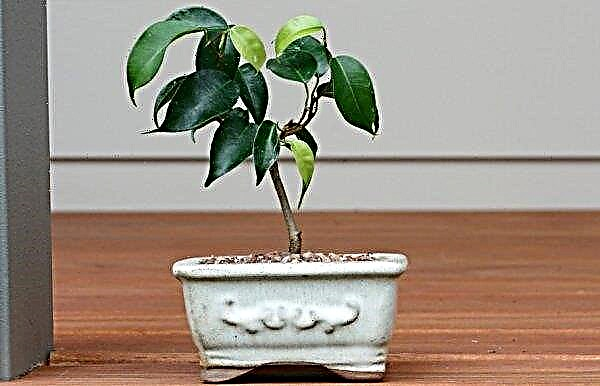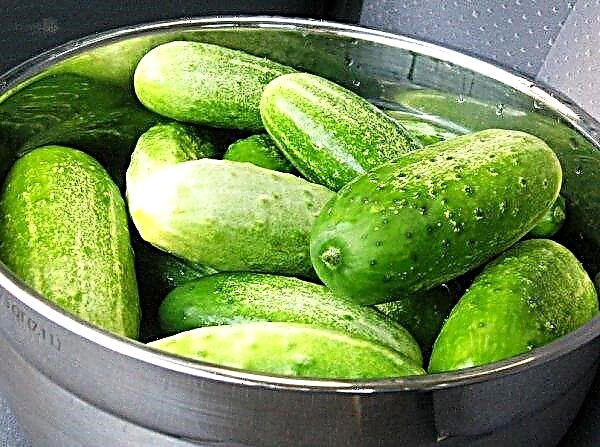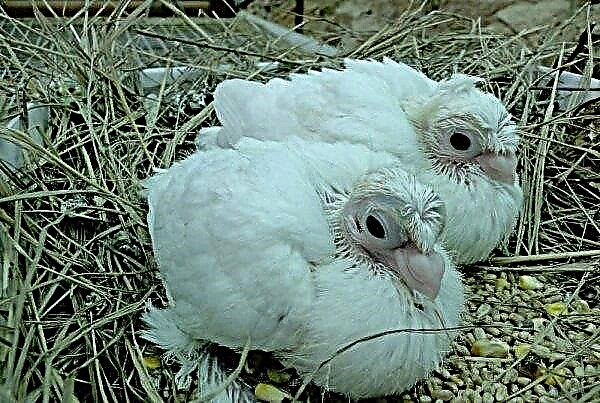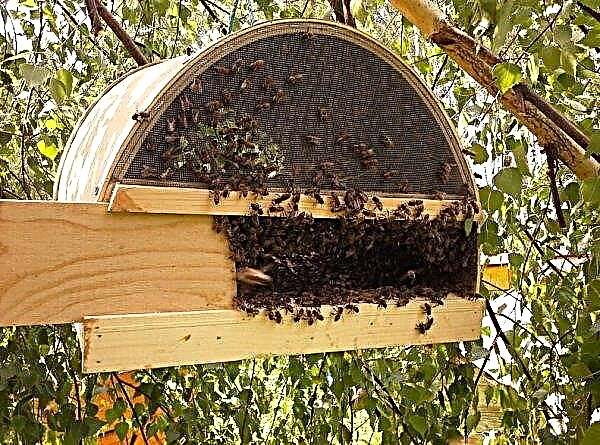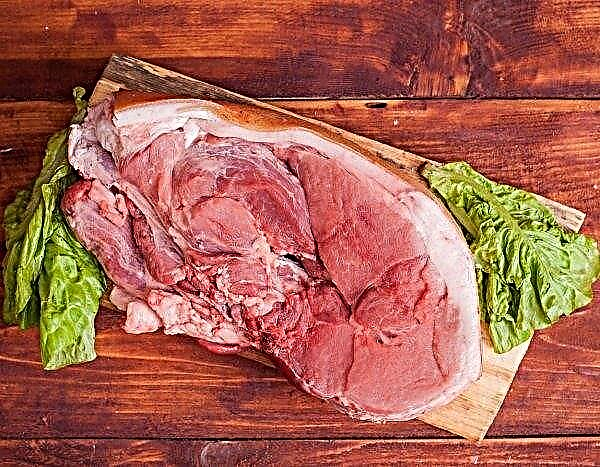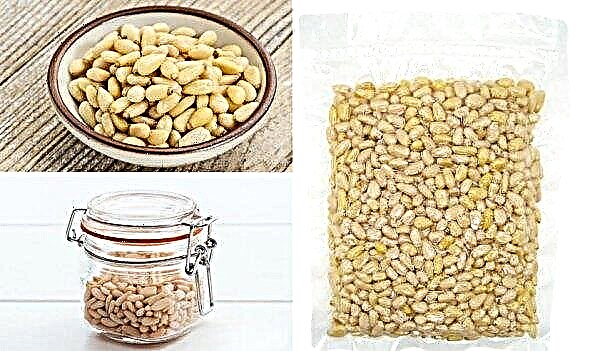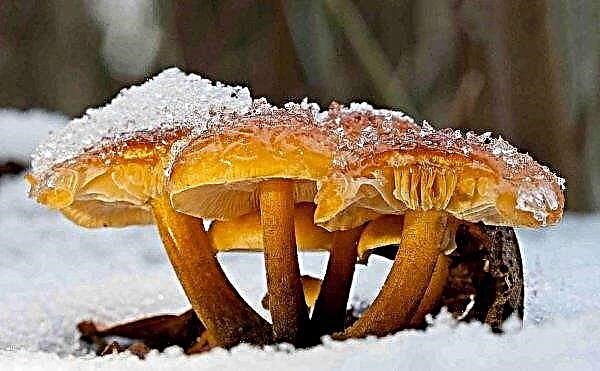Salted onion feathers are a convenient preparation that housewives make for the winter so as not to grow greens on window sills, or not to buy an expensive product in stores. Consider which onion is best suited for winter salting, how to properly prepare the blanks and store them for a long time.
What types of onions are suitable for salting?
Salting of greens is usually done in late spring or early summer, when the young stems have a delicate texture and a pleasant taste, therefore, onion varieties are considered the best for canning, in which the abundant green mass remains fresh for a long time.
Salting the stalks is most convenient in small jars, and the most saturated product can be obtained by salting using additional ingredients that improve the taste of the workpiece.
Did you know? The genus Onion has more than 900 species of plants, but only 228 species are used as food as a vegetable.
Different types of onions are used for distillation on a feather; it is best suited for these purposes:
- chives - refers to frost-resistant perennial species that are grown in open ground. Greens are distinguished by long, thin, neat feathers. The best varieties include: Siberian, Pink and Chemal;

- batun is a perennial plant that in appearance completely corresponds to onions, but this type of plant cannot form bulbs, therefore it is grown exclusively for greenery. The best varieties include: Winter, Tender, Gribovsky and May;

- multiglossal varieties of onions - the most common type for growing greens - this is a plant familiar to us, only it grows in "families", several units each and gives a plentiful crop of green mass. Typically, to obtain greens, they use small onion sets, the best varieties include: Strigunovsky, Spassky, Baia Verde, Danilovsky;

- multi-tiered onions - an early ripe type of vegetable, has very lush greens that remain tender for a long time, do not turn yellow and have a pleasant taste. The best varieties of multi-tiered onions are presented by Chelyabinsk, Memory, Odessa Winter.

Ingredient preparation
In order to make the harvest of salted onions tasty and stored for a long time, carefully prepare the ingredients before canning. Depending on the recipe, the constituent snacks may be different, so they undergo the required preparatory procedures for salting. The main ingredient is onion, therefore, he is given maximum attention in the process of preparing for canning.
Important! The length of the cut parts of the feathers should not be less than 2 cm, otherwise after cooking the product will turn into an unattractive slurry.
In order to pickle feathers, choose young and tender greens - this is important for the final resultso that the resulting product does not spoil the taste of the dish, which will be added later. Stalks must be fresh, it is better to use them on the day of harvest. When buying the main ingredient, pay attention to the elasticity of the stems, they should be uniform in color, without plaque, spots, traces of pests or diseases.
Preparation of stalks for pickling is done in advance, so as not to be distracted from the cooking process. Acquired or freshly cut greens examined. Discard substandard units, remove yellowed fragments, cut off the white bottom. The prepared ingredient is thoroughly washed several times under running water and cut.
Did you know? The world leader in onion consumption is Libya. In this country, about 33 kg of vegetables are produced per person per year.
Spices (horseradish leaves, laurel, etc.) used for salting are poured with boiling water to wash off dust particles and remove bacteria that can cause poor preservation of the snack.
Salting in cans of onions for the winter

5030 minutes
green onion stalks
1 kg
Energy value per 100 g:
- Initially prepare containers in which greens will be salted. If glass containers are used, they are sterilized, if plastic containers are poured with boiling water. Sterilize the jars better in a preheated oven at 100 ° C for 15 minutes.
- The prepared chopped ingredient must be salted and mixed thoroughly in a deep bowl. While mixing the chopped stems with salt, squeeze the greens in your hands a little so that it starts up the juice.
- Stack the greens in a container, tamping it well so that it is completely covered with juice.
- Vegetable oil is poured from above, which will protect against the development of mold and the fermentation of greens.
- The container must be tightly closed with a hot nylon or metal lid so that air does not get there during storage.

Storage Features
To preserve preservation for a long period without loss of taste, it is necessary to follow the recommendations on temperature, humidity and the location of the cans.Preservation which has not passed sterilization is stored no more than 10 months. The storage temperature of such products should be at the level of 0 ... + 2 ° С, and air humidity - about 90%.
Store the salty product in a cellar or refrigerator, subject to temperature conditions and a suitable level of humidity. It is possible to equip a glazed unheated balcony for storing canned food in winter, if the air temperature does not drop below 0 ° С. Preservation should be protected from direct sunlight by placing cans in a niche that closes with a tight curtain, or in a closet.Important! The procedure for mixing greens with salt and putting the mixture in a container should be in gloves to protect the skin of the hands from the irritating effects of the ingredients.

Thus, harvesting green stems for the winter is very quick and easy, following the recipe for cooking. In order for finished products to be stored for a long time and keep fresh until the next season, storage recommendations must be followed.





